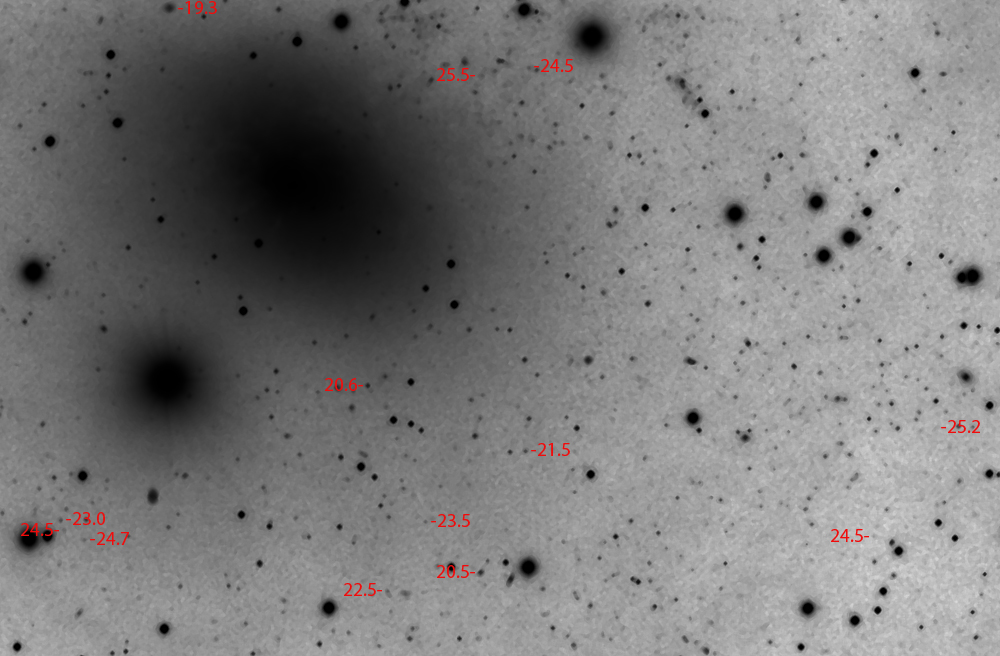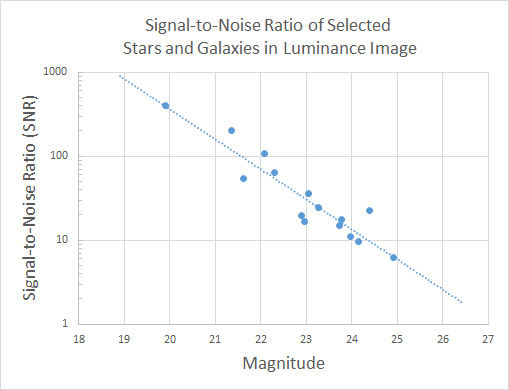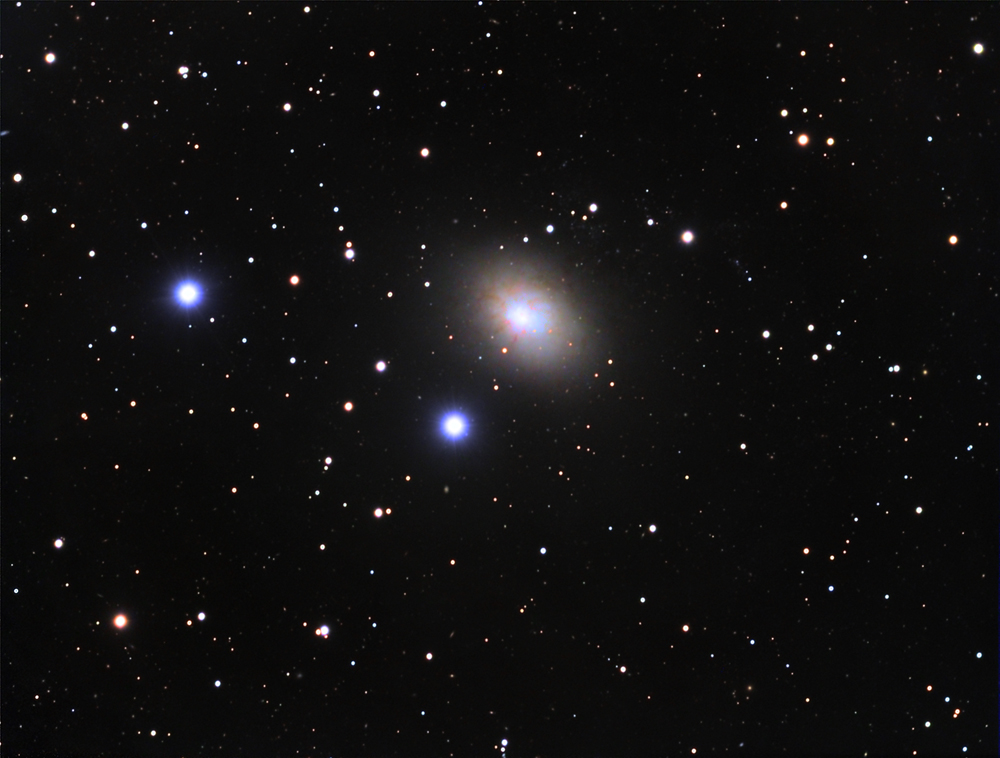
For a long time I have been interested in pushing my telescope and CCD camera to their limits, to see how dim an object they can capture. My equipment consist of a 14-inch Meade LX850 telescope and an SBIG ST-8300M camera. Over several nights, I aimed at the galaxy NGC 3077 in Ursa Major, collecting a total of 30 hours of luminance exposures (plus 1 hour each of red, green, and blue exposures to add the color to the final image). This is by far the longest set of exposures I have ever taken.
I chose this galaxy because the NASA Extragalactic Database (NED) lists the magnitudes of hundreds of dim galaxies in the vicinity.
The enlarged portion of the image shown here is displayed as a negative with the contrast increased to make the dim galaxies easier to see. (The full image, in color, is shown below.) The NED database does not list many galaxies with magnitudes greater than 24, but this image shows several dimmer than magnitude 24. Two galaxies dimmer than magnitude 25 are faintly visible. It seems that this long set of exposures was able to capture galaxies as dim as magnitude 25.5.
Image details: Exposure times of 30 hours luminance and 1 hour each of red, green, and blue, taken with an SBIG ST-8300M imager and a 14" Meade LX850 telescope at f/6.
February-March 2017
Another method for determining the limiting magnitude of an image was described in an article by Sean Walker in Sky & Telescope (November, 2016, pp. 68-70). The procedure is to use standard astronomical image-processing software to measure both the magnitude and the signal-to-noise ratio (SNR) of different objects in the image. By plotting the log of SNR versus magnitude, a linear trend can be seen, and according to Walker, the limiting magnitude can be estimated as the point at which the SNR is 2.5.
I tried this procedure for several stars and galaxies in this image, using Maxim DL software. The plot of SNR versus magnitude is shown below, and the trend line shows that the SNR is 5 at about magnitude 25.2, and the SNR is 2.5 at about magnitude 26. These estimates agree fairly well with the magnitudes of the galaxies shown in the image above.
According to Walker's article in Sky & Telescope, until 2013 the record for the dimmest magnitude recorded by an amateur astronomer was held by Rolf Wahl Olson of New Zealand, who took a whopping 120 hours of exposures using a 10-inch reflecting telescope and reached magnitude 25.4. The current record for an amateur was set in 2016 by Johannes Schedler, who took 17.7 hours of luminance with a 32-inch Cassegrain telescope in Cerro Tololo, Chile, and reached a magnitude of 26.4 (at a SNR of 2.5).

